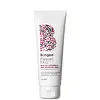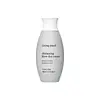What's inside
What's inside
 Key Ingredients
Key Ingredients

 Benefits
Benefits

 Concerns
Concerns

 Ingredients Side-by-side
Ingredients Side-by-side

Water
Skin ConditioningAloe Barbadensis Leaf Juice
Skin ConditioningPolyquaternium-37
Rosa Canina Fruit Oil
EmollientArgania Spinosa Kernel Oil
EmollientCocos Nucifera Oil
MaskingLaminaria Saccharina Extract
Skin ProtectingBambusa Arundinacea Leaf Extract
Skin ConditioningPanthenol
Skin ConditioningTrametes Versicolor Extract
Tocopheryl Acetate
AntioxidantGlycine Soja Oil
EmollientPropylene Glycol Dicaprylate/Dicaprate
EmollientHydrolyzed Corn Protein
Skin ConditioningHydrolyzed Wheat Protein
Skin ConditioningHydrolyzed Soy Protein
HumectantPPG-1 Trideceth-6
Skin ConditioningSorbitol
HumectantGlycerin
HumectantLeuconostoc/Radish Root Ferment Filtrate
AntimicrobialCitrus Aurantium Dulcis Peel Oil
MaskingCitrus Paradisi Peel Oil
MaskingCitrus Limon Peel Oil
MaskingCitrus Tangerina Peel Oil
MaskingAbies Sibirica Oil
MaskingPolyquaternium-10
Cetrimonium Chloride
AntimicrobialParfum
MaskingDehydroacetic Acid
PreservativeBenzyl Alcohol
PerfumingWater, Aloe Barbadensis Leaf Juice, Polyquaternium-37, Rosa Canina Fruit Oil, Argania Spinosa Kernel Oil, Cocos Nucifera Oil, Laminaria Saccharina Extract, Bambusa Arundinacea Leaf Extract, Panthenol, Trametes Versicolor Extract, Tocopheryl Acetate, Glycine Soja Oil, Propylene Glycol Dicaprylate/Dicaprate, Hydrolyzed Corn Protein, Hydrolyzed Wheat Protein, Hydrolyzed Soy Protein, PPG-1 Trideceth-6, Sorbitol, Glycerin, Leuconostoc/Radish Root Ferment Filtrate, Citrus Aurantium Dulcis Peel Oil, Citrus Paradisi Peel Oil, Citrus Limon Peel Oil, Citrus Tangerina Peel Oil, Abies Sibirica Oil, Polyquaternium-10, Cetrimonium Chloride, Parfum, Dehydroacetic Acid, Benzyl Alcohol
Water
Skin ConditioningPolyalkylaminoester-1
Hydrolyzed Corn Starch
HumectantPvp
Emulsion StabilisingPolyacrylate-13
Sodium Citrate
BufferingPhospholipids
Skin ConditioningPentylene Glycol
Skin ConditioningPropylene Glycol Dibenzoate
Skin ConditioningFructose
HumectantSodium Hyaluronate
HumectantGlycerin
HumectantMaltodextrin/Vp Copolymer
Myristyl Alcohol
EmollientPolyporus Umbellatus Extract
Skin ProtectingAmaranthus Caudatus Seed Extract
Skin ConditioningPolysorbate 20
EmulsifyingXanthan Gum
EmulsifyingPolyisobutene
PPG-2 Myristyl Ether Propionate
EmollientOleth-10
EmulsifyingParfum
MaskingHydroxyacetophenone
AntioxidantEthylhexylglycerin
Skin ConditioningLinalool
PerfumingCitronellol
PerfumingLimonene
PerfumingCitral
PerfumingWater, Polyalkylaminoester-1, Hydrolyzed Corn Starch, Pvp, Polyacrylate-13, Sodium Citrate, Phospholipids, Pentylene Glycol, Propylene Glycol Dibenzoate, Fructose, Sodium Hyaluronate, Glycerin, Maltodextrin/Vp Copolymer, Myristyl Alcohol, Polyporus Umbellatus Extract, Amaranthus Caudatus Seed Extract, Polysorbate 20, Xanthan Gum, Polyisobutene, PPG-2 Myristyl Ether Propionate, Oleth-10, Parfum, Hydroxyacetophenone, Ethylhexylglycerin, Linalool, Citronellol, Limonene, Citral
 Reviews
Reviews

Ingredients Explained
These ingredients are found in both products.
Ingredients higher up in an ingredient list are typically present in a larger amount.
Glycerin is already naturally found in your skin. It helps moisturize and protect your skin.
A study from 2016 found glycerin to be more effective as a humectant than AHAs and hyaluronic acid.
As a humectant, it helps the skin stay hydrated by pulling moisture to your skin. The low molecular weight of glycerin allows it to pull moisture into the deeper layers of your skin.
Hydrated skin improves your skin barrier; Your skin barrier helps protect against irritants and bacteria.
Glycerin has also been found to have antimicrobial and antiviral properties. Due to these properties, glycerin is often used in wound and burn treatments.
In cosmetics, glycerin is usually derived from plants such as soybean or palm. However, it can also be sourced from animals, such as tallow or animal fat.
This ingredient is organic, colorless, odorless, and non-toxic.
Glycerin is the name for this ingredient in American English. British English uses Glycerol/Glycerine.
Learn more about GlycerinParfum is a catch-all term for an ingredient or more that is used to give a scent to products.
Also called "fragrance", this ingredient can be a blend of hundreds of chemicals or plant oils. This means every product with "fragrance" or "parfum" in the ingredients list is a different mixture.
For instance, Habanolide is a proprietary trade name for a specific aroma chemical. When used as a fragrance ingredient in cosmetics, most aroma chemicals fall under the broad labeling category of “FRAGRANCE” or “PARFUM” according to EU and US regulations.
The term 'parfum' or 'fragrance' is not regulated in many countries. In many cases, it is up to the brand to define this term.
For instance, many brands choose to label themselves as "fragrance-free" because they are not using synthetic fragrances. However, their products may still contain ingredients such as essential oils that are considered a fragrance by INCI standards.
One example is Calendula flower extract. Calendula is an essential oil that still imparts a scent or 'fragrance'.
Depending on the blend, the ingredients in the mixture can cause allergies and sensitivities on the skin. Some ingredients that are known EU allergens include linalool and citronellol.
Parfum can also be used to mask or cover an unpleasant scent.
The bottom line is: not all fragrances/parfum/ingredients are created equally. If you are worried about fragrances, we recommend taking a closer look at an ingredient. And of course, we always recommend speaking with a professional.
Learn more about ParfumWater. It's the most common cosmetic ingredient of all. You'll usually see it at the top of ingredient lists, meaning that it makes up the largest part of the product.
So why is it so popular? Water most often acts as a solvent - this means that it helps dissolve other ingredients into the formulation.
You'll also recognize water as that liquid we all need to stay alive. If you see this, drink a glass of water. Stay hydrated!
Learn more about Water